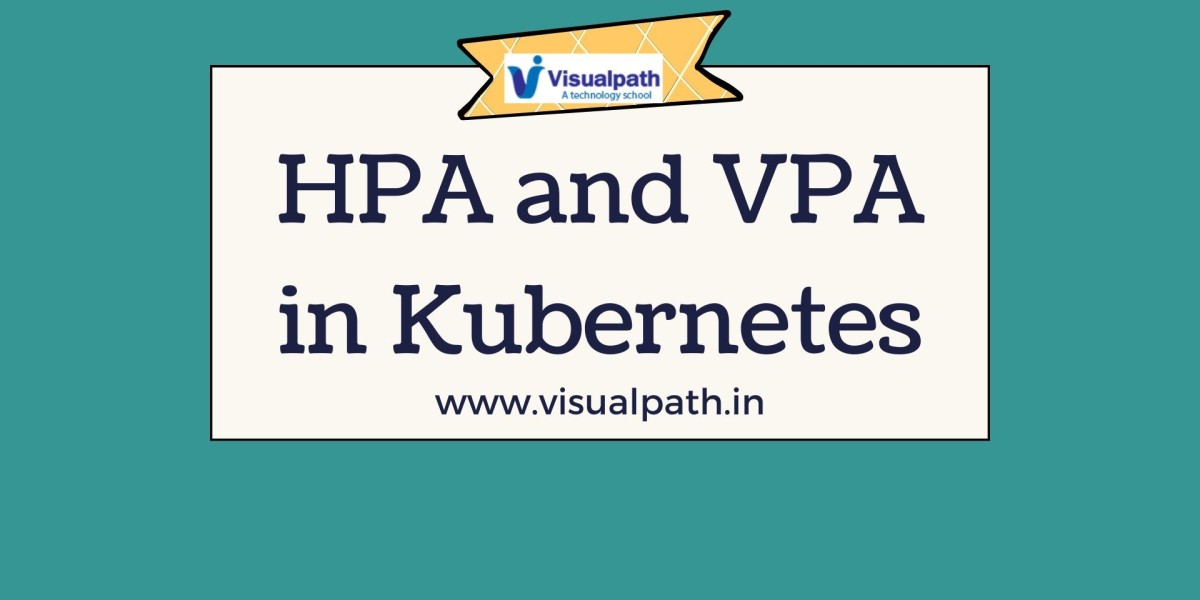What is the Difference Between HPA and VPA in Kubernetes?
Introduction:
Kubernetes, the leading container orchestration platform, is designed to manage containerized applications at scale. As applications experience varying levels of demand, it becomes crucial to adjust resources dynamically to maintain performance and efficiency. Docker and Kubernetes Training
Horizontal Pod Autoscaler (HPA):
Scaling by Replication:
The Horizontal Pod Autoscaler (HPA) is a Kubernetes feature that automatically adjusts the number of pod replicas in a deployment, replica set, or stateful set based on observed metrics like CPU utilization, memory usage, or custom metrics provided by an external source. HPA is designed to handle fluctuations in load by increasing or decreasing the number of pod instances running the application.
Key Features of HPA:
Replication-Based Scaling: HPA scales the application horizontally by adding or removing pod replicas. This approach distributes the workload across multiple instances, allowing the application to handle more traffic.
Metrics-Based Decisions: HPA relies on metrics collected from the Kubernetes Metrics Server or other custom metrics providers. These metrics determine when to scale up or down. Kubernetes Online Training
Use Cases: HPA is ideal for applications that experience varying traffic patterns, such as web servers, where the workload can be distributed across multiple pods. For example, during peak hours, HPA can scale out additional pods to handle the increased load and scale them back down during off-peak times.
Limitations of HPA:
Fixed Resource Limits: Each pod replica has a fixed amount of CPU and memory allocated to it. If the resource requirements per pod change, HPA does not adjust the pod's resource limits but only the number of replicas.
Not Suitable for All Workloads: HPA works best with stateless applications where requests can be easily distributed across multiple instances. It may not be suitable for stateful applications that require consistent data across replicas.
Vertical Pod Autoscaler (VPA):
Scaling by Resource Adjustment:
The Vertical Pod Autoscaler (VPA) is another Kubernetes feature that adjusts the CPU and memory resources allocated to individual pods based on their observed usage. Instead of adding or removing replicas, VPA scales the application vertically by increasing or decreasing the resource limits of existing pods.
Key Features of VPA:
Resource-Based Scaling: VPA adjusts the resource requests and limits of a pod to better match its actual usage. This ensures that each pod has the right amount of resources to operate efficiently. Docker Online Training
Automatic Resource Adjustment: VPA monitors the resource consumption of pods over time and adjusts the allocated resources accordingly. This helps prevent both over-provisioning (wasting resources) and under-provisioning (causing performance issues).
Use Cases: VPA is ideal for applications with varying resource requirements that are difficult to predict, such as batch processing jobs or machine learning workloads. For instance, a machine learning job might require more CPU and memory as the dataset grows, and VPA can automatically adjust the resources to meet these needs.
Limitations of VPA:
Pod Restarts: When VPA adjusts the resources for a pod, it typically requires restarting the pod to apply the new resource limits. This can cause temporary downtime, which may not be acceptable for all applications.
Limited to Single Pods: Unlike HPA, which scales across multiple replicas, VPA focuses on optimizing the resources for individual pods. This means that VPA may not be sufficient for applications that need to scale out to handle increased load. Kubernetes Certification Training
HPA vs. VPA:
HPA and VPA serve different purposes in a Kubernetes environment, and they can be used together to achieve optimal scalability. HPA is best suited for scaling out applications by adding more instances, while VPA is ideal for fine-tuning the resources allocated to each instance.
Conclusion:
HPA and VPA are powerful tools in Kubernetes that address different aspects of autoscaling. HPA scales applications by adjusting the number of pod replicas, making it ideal for handling traffic spikes and distributing workload. VPA, on the other hand, adjusts the resources allocated to individual pods, ensuring that each pod operates efficiently without wasting resources.
Visualpath is the Leading and Best Institute for learning Docker and Kubernetes Online in Ameerpet, Hyderabad. We provide Docker Online Training Course, you will get the best course at an affordable cost.
Attend Free Demo
Call on - +91-9989971070.
Visit : https://www.visualpath.in/DevOps-docker-kubernetes-training.html
WhatsApp : https://www.whatsapp.com/catalog/919989971070/
Visit Blog : https://visualpathblogs.com/










